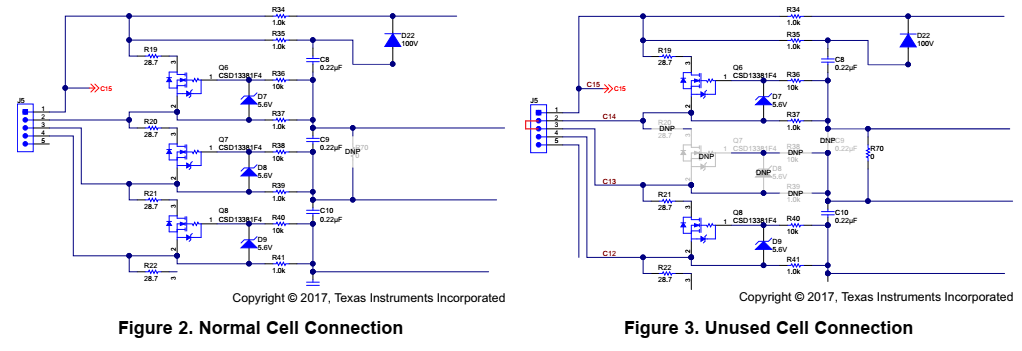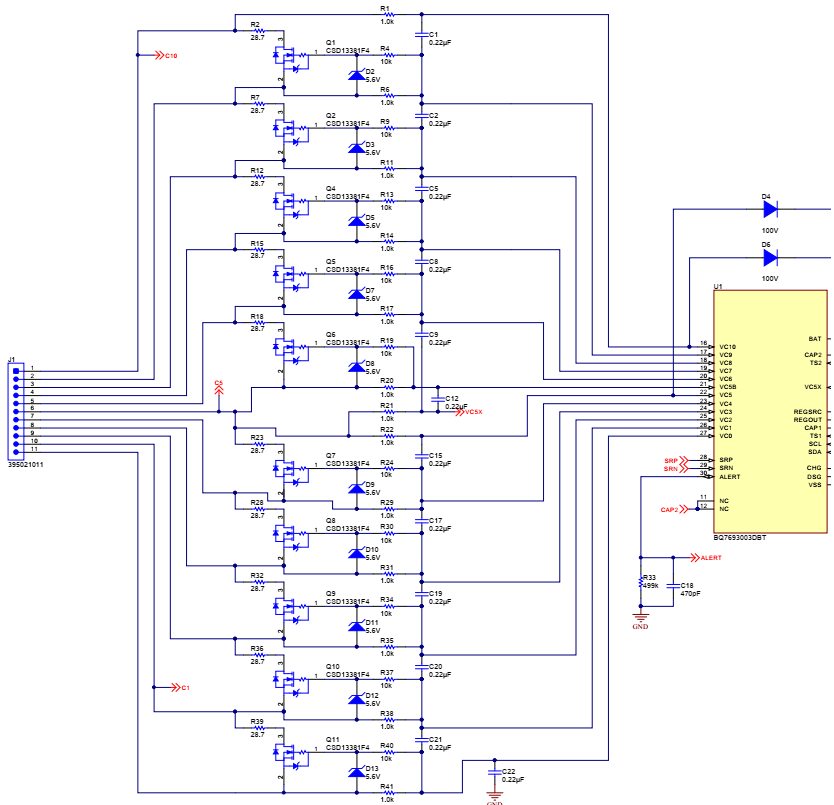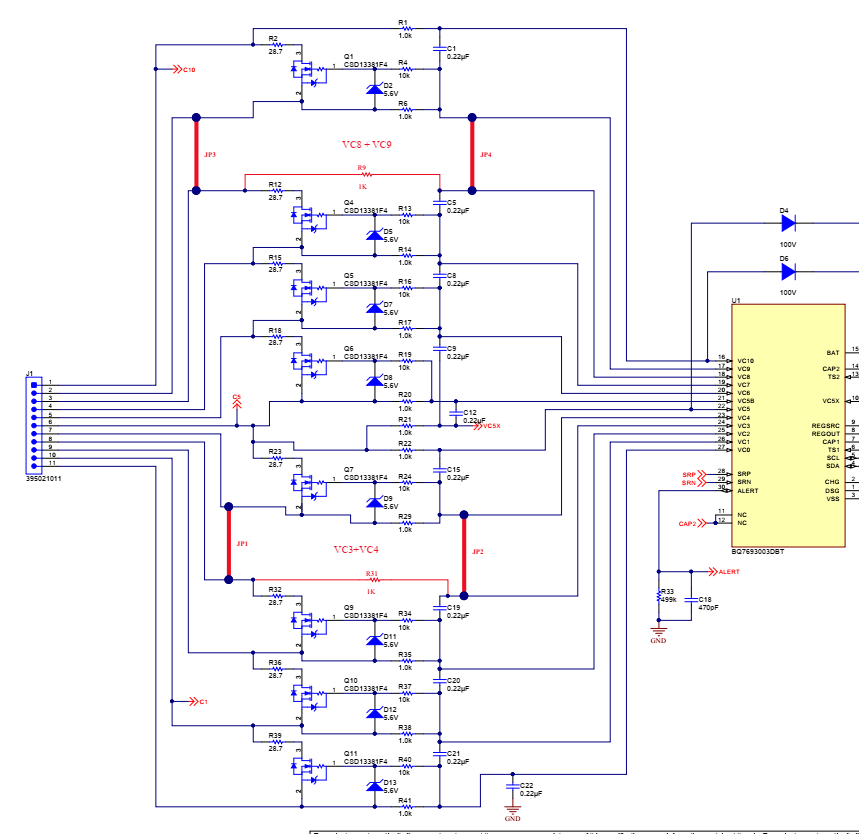Other Parts Discussed in Thread: TIDA-00792, EV2400, BQ78350, BQ76200
Hi everyone. I have a few days reading this forum, found several themes, but the information is divided. The question is how to properly connect unused cells, when the number of series cells in the battery decreases. I used the BQ76930, a battery 8S, in accordance with datasheet on BQ769x0 (SLUSBK2H ) need to short a cell VC3+VC4, and VC8+VC9.
I fulfilled those conditions.
Here's mine AFE Cell Map
Then in one of those on this forum, I've read, that unused components can distort measurements.I have removed unused components according to the following document. Here is a picture from the document TIDA-00792 (TIDUCN1), page 5, paragraph 2.2.1.
As a result, the balancing on cell 5 and cell 10 stopped working, I tested the balancing command with command 0x001B. Now I ask you to turn to the scheme.This is how it looks initially.
And so after revision in accordance with the document TIDA-00792 (TIDUCN1).
I deleted components R28,Q8, D10, R30, R31, C17 for point VC3+VC4, and components R7, Q2, D3, R9, R11, C2 for point VC8+VC9. Then I set the jumpers JP1+JP2 for point VC3+VC4, and jumpers JP3+JP4 for point VC8+VC9 (As jumpers were 0 Ohm resistors installed instead of capacitors C2 and C17, respectively). Cell balancing vc5 and VC10 still didn't work.
Then I installed the resistors R9 and R31, remove jumpers JP2 and JP4, and balancing has work. But it contradicts the document TIDA-00792 (TIDUCN1), since now there are no jumpers on the terminals of the chip, and there are filter resistors R9 и R31.Will not do this error of measurement? Advise how to connect correctly.







